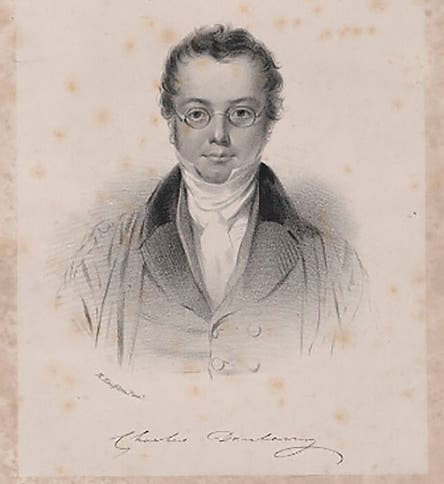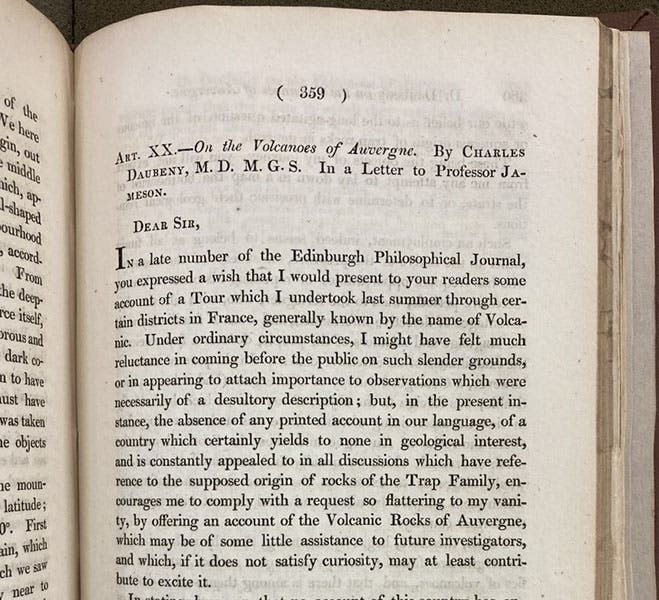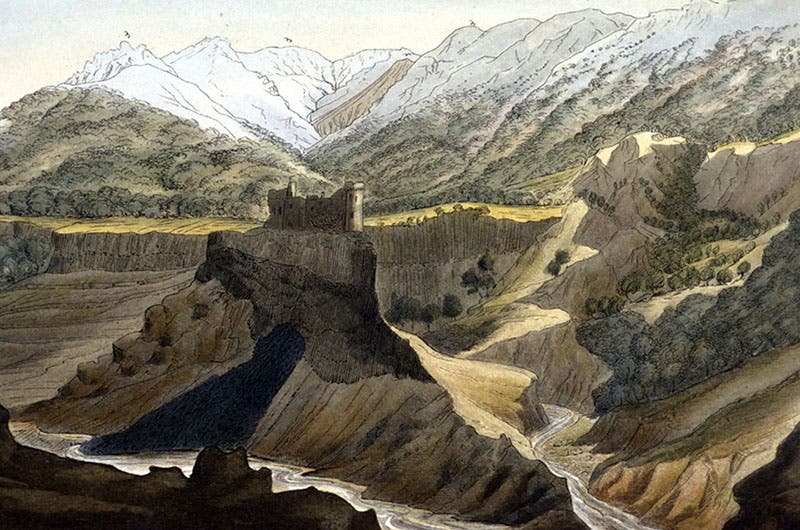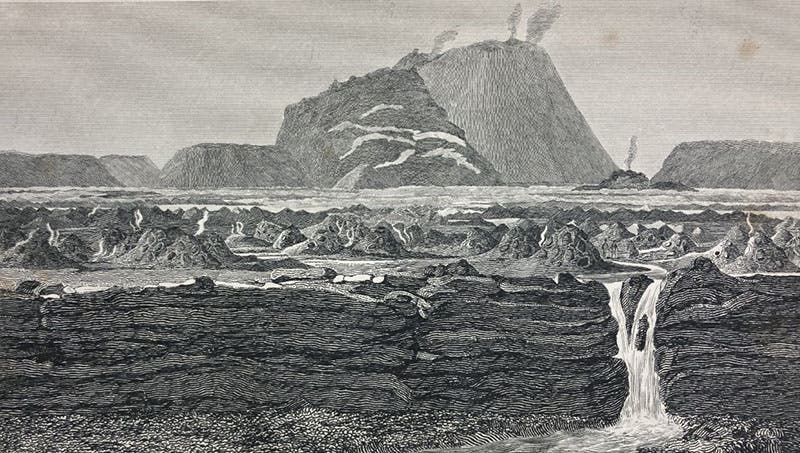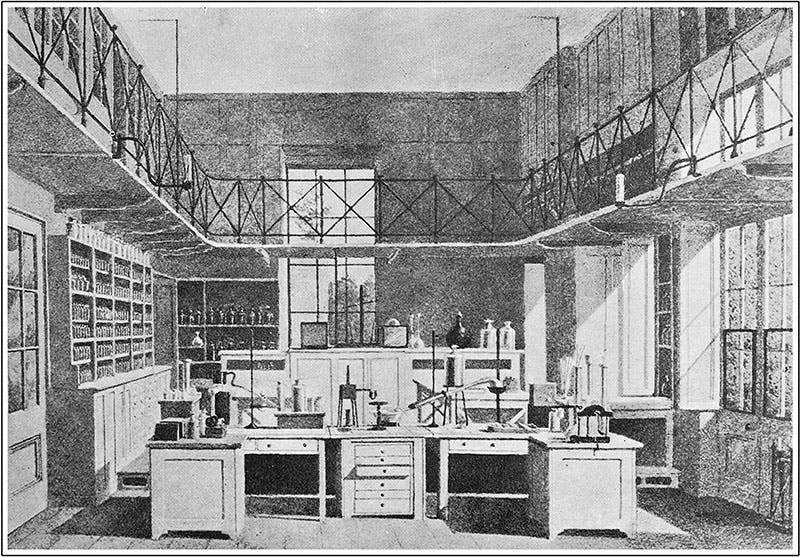Scientist of the Day - Charles Daubeny
Charles Daubeny, an English chemist, geologist, and botanist, was born Feb. 11, 1795. Daubeny was a member of what has been called the Oxford School of Geology, the members of which, in the 1820s, maintained that the Earth had been scoured by a cataclysmic flood at some time in the past, carving out all of the Earth’s major valleys in one fell swoop. This was called the diluvial theory, and although it sounds like Christian literalism applied to geology, it was not. William Buckland, the best known diluvalist and professor of geology at Oxford; Daubeny, professor of chemistry; and William Conybeare, a graduate of Oxford, were the three dominant figures of the Oxford School, and they were much opposed to the idea that one should try to learn about the Earth's history by studying ancient writings, including Scripture. Instead, they argued that close examination of the geological features of the Earth suggested ancient and massive flooding, probably more than once. Daubeny, when quite young, took a trip to the Auvergne region of France, which Nicolas Desmarest had shown to be a region of extinct volcanos crisscrossed with ancient lava streams and prismatic basalt. Daubeny agreed that the basalt was volcanic in origin (an idea that many geologists, followers of the neptunist Abraham Werner, still rejected), and he discovered many places where water had slowly cut its way thought basaltic deposits. But as for the larger valleys, he could think of no way to explain their breadth by the action of rivers and streams, and thought it obvious that a massive flood had done most of the initial sculpting. He published a series of papers in the Edinburgh Philosophical Journal in 1820-21 to make his case (second image).
Interestingly, just after Daubeny left the Auvergne region, another English geologist, George Poulett Scrope, showed up for his own geological tour. Scrope found evidence that Daubeny had overlooked, indicating that, in the past, volcanos erupted, lava flowed and cooled, running water cut is way through, then other volcanoes erupted, produced new streams of lava, the solidified remains of which were in turn cut through by other rivers, and so it happened again and again. Some of the geological formations he observed would have been obliterated by any kind of major flood. He came back and wrote a book, Memoir on the Geology of Central France (1827), a beautifully illustrated guide to the geology of the Auvergne. We see here a detail of one of the large folding plates in Scrope’s book, showing valleys of lava and basalt eroded by flowing water (third image). You can see more views of the Auvergne volcanic field at our post on Scrope.
Charles Lyell, an Oxford graduate but most definitely not one of the Oxford School, chose to follow Scrope's lead rather than Daubeny's; he rejected the diluvialist interpretation and proposed, in 1830, a theory that came to be known as uniformitarianism, which advocated that the only acceptable forces available to geologists, trying to explain the past, were forces now acting in the present. Since no one had ever seen a world-wide catastrophic flood, Lyell refused to invoke such an event. And he found he didn’t need it.
So Buckland and Daubeny proved to be wrong about diluvialism, although they did not yield ground easily. Daubeny, however, had another contribution to make. Being a chemist, he believed that volcanism was the result of chemical reactions in the crust, rather than just the byproduct of a hot central Earth. He wrote an entire book about volcanos: A Description of Active and Extinct Volcanos; with remarks on their origin, their chemical phaenomena, and the character of their products (1826), compiled from the lectures he gave at Oxford on the subject (it is interesting that he – not Buckland, the geologist – lectured to the Oxford undergrads about volcanos). We have several editions of this popular work in our collections, including the first (fourth image). It has hardly any illustrations, unlike Scrope’s sumptuous book, but it reached many more people. We show here the frontispiece, an etching of the volcano at Jorullo in Mexico, observed and drawn by Alexander von Humboldt (fifth image).
Daubeny is something of a hero to modern-day Magdalen College at Oxford; on their website, Daubeny is described as “arguably the first Fellow of Magdalen who could be described as a scientist in the modern sense of the word.” They have preserved his laboratory in what is now called the Daubeny Building, and they are working hard to conserve his professional library, which is housed in the same building. We see here a 19th-century engraving of Daubeny’s lab and library (sixth image).
Most portraits of Daubeny show him as he appeared in the 1850’s or later; you can see one of those versions in his Wikipedia article. We prefer a lithographed portrait that is in the National Portrait Gallery in London, made in 1836, where a volcanic fire still burns in Daubeny’s eyes (first image).
Dr. William B. Ashworth, Jr., Consultant for the History of Science, Linda Hall Library and Associate Professor emeritus, Department of History, University of Missouri-Kansas City. Comments or corrections are welcome; please direct to ashworthw@umkc.edu.

